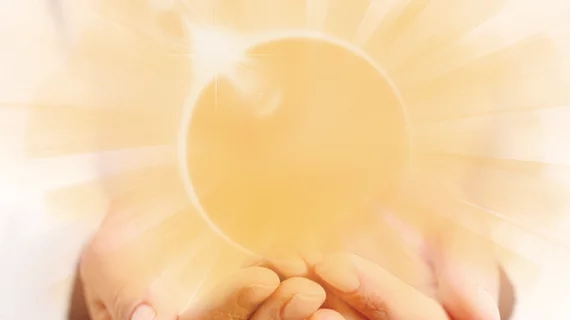Solar cell materials could make medical imaging safer, more cost-effective
Replacing traditional X-ray detector materials with solar cell alternatives could be a game changer for radiation protection measures within the realm of diagnostic imaging.
New research led by experts at the Universities of Oxford and Cambridge suggests that a sustainable solar cell material known as bismuth oxyiodide (BiOI) can detect X-rays at doses over 250 times lower than commercial detectors currently in use. Not only could the material switch reduce patient exposure to ionizing radiation, it also could cut costs associated with traditional X-ray equipment, according to experts involved in the research.
“We have developed BiOI single crystals into X-ray detectors that work over 100 times better than the current state-of-the-art for medical imaging,” noted study leader Robert Hoye, PhD, from the University of Oxford. “BiOI is nontoxic, stable in air, and can be grown cost-effectively and at scale. We are very excited by the potential BiOI has to make the next generation of noninvasive diagnostics more accessible, safer and more effective.”
BiOI is composed of bismuth and iodine—two heavy elements that can increase the absorption of X-rays. Interest in the nontoxic semiconductor has grown in recent years alongside the surge of calls for cleaner energy sources, particularly within the solar power space.
Prior attempts have been made to integrate BiOI into X-ray detectors, but those efforts failed due to the nanocrystalline nature of commercial detectors. That is where the work of Hoye and colleagues comes into play.
The team developed a method to grow crystals of BiOI using a scalable vapor-based approach. The low defect density of the crystals enabled them to produce ultra-low dark currents, which improves sensitivity to X-rays. Combined, these effects reduce the amount of ionizing radiation needed to produce quality diagnostic imaging exams.
“We have built a microscopic quantum mechanical model of electrons and ions that can fully explain the remarkable optoelectronic properties of BiOI that make it such a good material for X-ray detection,” said Bartomeu Monserrat, PhD, from Cambridge’s Department of Materials Science and Metallurgy, who co-led the project. “This gives us a roadmap for designing even more materials with similarly advantageous properties.”
As the team continues its work, they are looking at different ways to increase the size of BiOI detectors, while preserving properties found in single crystals.
The detailed research is available in Nature Communications.

